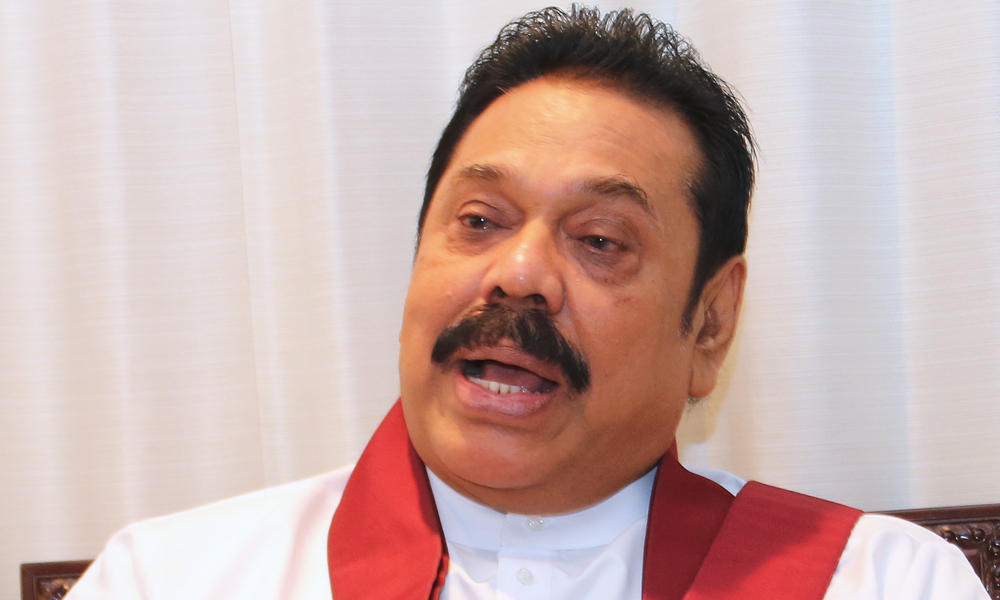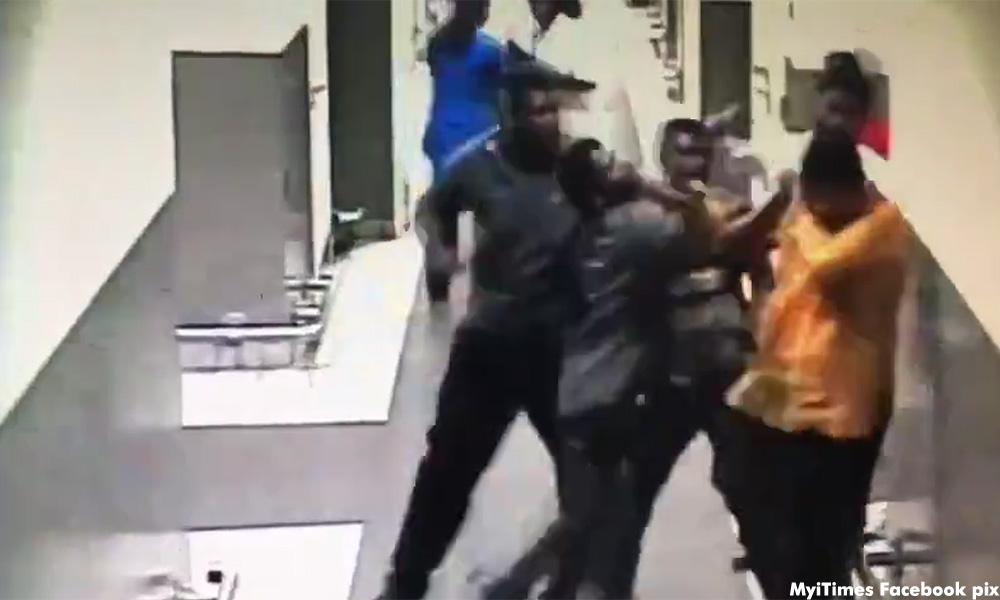Who were the LTTE?

KINIGUIDE | The Liberation Tigers of Tamil Eelam (LTTE) was one of a number of competing guerilla groups that fought against the Sri Lankan government for an independent homeland in the north and east of the island, where a majority of people were Tamils.
It gradually gained pre-eminence among these groups and at its peak held sway over large areas in the north of the island, establishing its own government.
Vilified by foes for its use of child soldiers, suicide bombers and political assassinations, the LTTE did draw significant support from those who felt the cause of fighting Sinhalese majority oppression was a valid one.
Eventually, in 2009, the LTTE was defeated militarily, its iconic figurehead Velupillai Prabhakaran (photo) and most of its leaders were killed, while others were arrested. More than 10,000 fighters were rehabilitated, even as a humanitarian crisis unfolded in territory the LTTE formerly held.

Roots of the war
Historically, waves of Tamil migration to Sri Lanka date back thousands of years. Tamil kingdoms in the north co-existed alongside Sinhala dynasties in the south and centre of the island for much of the time.
There were even occasions when the Tamils, in the form of the Chola Dynasty centred in Thanjavur (modern-day Tamil Nadu), conquered most of the island.
Their strength peaked under the great warrior-king Rajendra Chola I, who annexed most of the island in 1017 and abducted the Sinhala ruler Mahinda V.
Although the Sinhala kings gradually regained their lands, an independent Tamil kingdom centred around the city of Jaffna existed for many centuries.
However, colonial rule united the island, and when Sri Lanka was granted independence in 1948, the Tamils found themselves in a minority, with Sinhalas making up 69 percent of the island's population.

Ethnic tensions boiled over in 1956 with the passing of the Sinhala Only Act which replaced English as the official language of the nation. Protests over the act led to racial killings with more than 100 Tamils killed. In 1958 a larger number died when tensions between the Sinhalese and Tamils erupted again.
Birth of the Tigers
In the 1970s, Sri Lanka became increasingly polarised. This included the rise of Sinhalese extremist violence through the left-leaning Janatha Vimukthi Peramuna which staged an insurrection against the Sirivamo Bandaranaike government in 1971. An estimated 30,000 people lost their lives.
During this time many Tamil youths also felt that their politicians were conceding too much ground to the federal government.
A number of young Tamils began carrying out guerilla operations against the authorities.
This culminated in the assassination in 1975 of Jaffna mayor Alfred Duraiappah, who was shot dead in a temple. His masked killers targeted him for betraying the Tamil cause.
A couple of years after the killing, a group known as the Tamil New Tigers claimed that Duraiappah had been shot by one Velupillai, who was to become the central figure of the LTTE.
Civil War begins
Ethnic strife continued to escalate. Following the 1977 general election, more than 300 Tamils were killed in anti-Tamil pogroms, whereas in 1981, the historic Jaffna library was burned down by state security forces.

In 1983, this became an all-out war with the events of Black July. The LTTE carried out an ambush on a Sri Lanka army patrol, killing 13 soldiers, and in retaliation hundreds, maybe thousands, of Tamils were slain.
In the Cold War environment, it was easy for rebel groups to get arms, financial backing and training. As such there were a number of rival groups ostensibly fighting the same cause as the LTTE.
In April 1984, Tamil Nadu Chief Minister M Karunanidhi invited the leaders of the five leading Tamil militant groups, the Eelam People's Revolutionary Liberation Front (EPRLF), Eelam Revolutionary Organisation of Students (EROS), Liberation Tigers of Tamil Eelam (LTTE), People's Liberation Organisation of Tamil Eelam (PLOTE) and Tamil Eelam Liberation Organisation (TELO), for talks aimed at uniting the groups.
It didn't work as, over time, the LTTE became the dominant group, wiping out its rivals often by committing fraternal killings of captured rebels.
The LTTE also became known for its use of child soldiers, suicide bombers and political assassinations, including many of moderate Tamil politicians who still supported the federal position, instead of advocating for a separate Tamil homeland.
Despite the reputation for violent methods, the LTTE gained much sympathy and financial support from among the diaspora. Financing came from a number of places, including Malaysia.

Selvarasa Pathmanathan, who eventually became the LTTE's chief international spokesperson, operated from Malaysia from 1987-1990 before decamping to Thailand.
At its peak, the LTTE operated a de facto state under its control, named Tamil Eelam, with Kilinochchi as its administrative capital. It established its own air force and navy, and had its own currency, radio, television as well as health, education and court systems.

The LTTE's relationship with India soured over the presence of the Indian Peace Keeping Force from 1987 to 1990 and this prompted one of its most notorious acts in May 1991, when a suicide bomber killed former Indian prime minister Rajiv Gandhi and 14 others at a campaign rally in Sriperumbudur, Tamil Nadu.
Two years later, another suicide bomber took the life of Sri Lanka's president, Ranasinghe Premadasa.
The final years
While the assassinations made some dent to its popularity, the LTTE generally maintained a degree of strength and support for a good 20 years. At one point in 2002, the LTTE dropped its demand for a separate state and appeared to settle for regional autonomy.

A ceasefire treaty was declared, and it appeared as if the fighting might be finally over with a permanent solution, but talks were stalled after six rounds, during which the region was also badly hit by the 2004 Asian tsunami.
In 2006, the recently-elected president of Sri Lanka, Mahinda Rajapaksa (above), decided against maintaining the peace and set out to destroy the LTTE militarily. His ruthless scorched earth tactics included the internment of Tamil civilians in concentration camps.
Finally, in May 2009, the LTTE was defeated militarily and Velupillai was killed along with his entire family and most of his loyal supporters.
The 26-year war cost the lives of an estimated 80,000-100,000 people. Many human rights atrocities against civilians were carried out in the Sri Lankan Army's final push for victory.
Selvarasa, who attempted to keep the LTTE alive, was arrested in a Kuala Lumpur hotel within three months of the defeat.
The years since
Sri Lanka has engaged in a painful rebuilding process. Velupillai had a cult-like following that initially refused to believe he was dead, but over time, supporters came to acknowledge that the war had left no winners.

On Sept 4, 2016, Sri Lanka's High Commissioner to Malaysia, Ibrahim Ansar, was assaulted (photo) at KL International Airport by locals, showing that there were still some residual tensions beneath the surface.
Meanwhile in India, a political party called the Naam Tamilar Katchi has tried to play on the LTTE legacy.
Led by film director Seeman and calling for a unified Tamil homeland in both Tamil Nadu and northern Sri Lanka, it has very little support among the voting public, garnering less than two percent at the Tamil Nadu state elections in 2016, despite fielding 234 candidates.
The focus over the last 10 years has been on rebuilding and rehabilitation, which has also been supported by the diaspora.
There are many thousands of Sri Lankan Tamil refugees around the world, and also a high number who were internally displaced.
This Kiniguide was compiled by Martin Vengadesan.
✍ Credit given to the original owner of this post : ☕ Malaysians Must Know the TRUTH
🌐 Hit This Link To Find Out More On Their Articles...🏄🏻♀️ Enjoy Surfing!



















Post a Comment